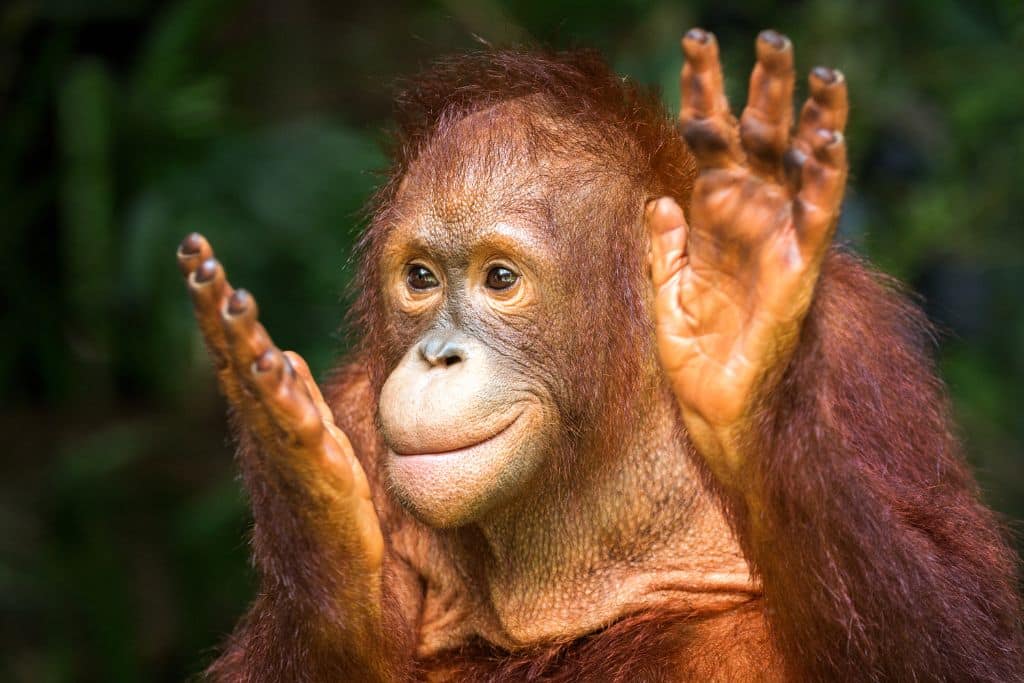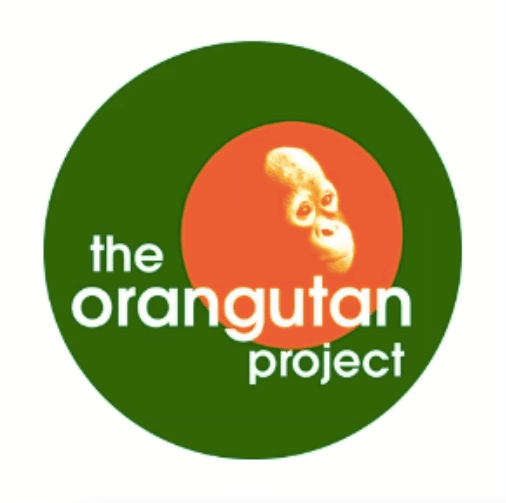Every day includes stories of loss, hope, and tragedy, reminders of the precariousness of the Great Ape’s hold on survival. The big question is: Can we save the orangutan? To celebrate International Orangutan Day 2023. Leif Cocks, founder of the Orangutan Project, explains why this animal is endangered and what we can do to save it.
—
This article was written by Leif Cocks
About Orangutans
Orangutans are the only arboreal Great Ape; all others, including gorillas, chimpanzees, bonobos and humans, live primarily on the ground. Ancestral orangutans once existed all the way from Southern China to the island of Java. Now they only survive in the isolated archipelago of Indonesia, specifically on Sumatra and Borneo, where they still live today, but in vastly reduced numbers. As an arboreal species, orangutans virtually evolved with no natural predators, which allowed them to focus on the survival of a few offspring, becoming the slowest reproducing species. Today, there is an imminent threat from a super predator, humans, and our seemingly insatiable need to gobble up the rainforest and replace it with unsustainable monocultures.
Orangutans face threats from all sides, from poaching to forest conversion into unsustainable monocultures. Being the slowest reproducing species in the world, orangutans are highly prone to extinction, so if we do not act now, the species could be effectively extinct in the next ten years. If the remaining forests are not protected from legal and illegal unsustainable monocultures like oil palm or rubber plantations, there will not be sufficient forests to sustain the populations required to ensure orangutans do not become extinct.
“Effective extinction doesn’t mean all orangutans will cease to exist within the next ten years,” says Leif Cocks, a world-renowned primatologist and founder of The Orangutan Project. “While orangutans might still remain in fragmented forests in 2032, and babies might continue to be born, if we do not halt and reverse deforestation, encouraging and supporting orangutan numbers to recover from the last fifty years of destruction, their genetic diversity from small and fragmented populations will be so compromised that they will eventually die out.”
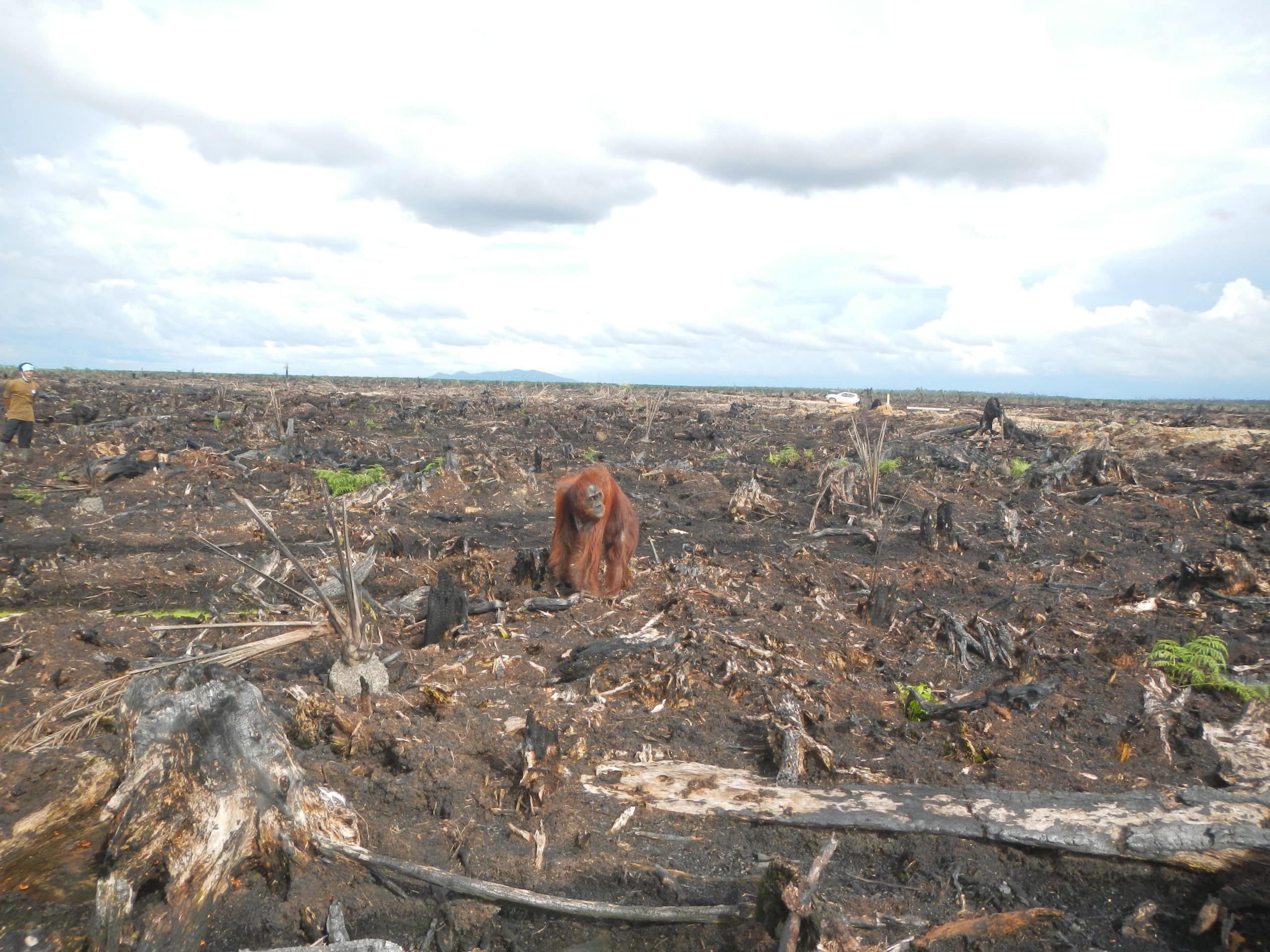
When forests are destroyed – whether legally or illegally – orangutans often become stranded far from their natural habitat. Photo: The Orangutan Project.
You might also like: All You Need to Know About the Orangutan
The Most Endangered Great Ape on Earth
In 2017, a new species of orangutan was identified by scientists in a tiny section of forest in North Sumatra. The Tapanuli orangutan (Pongo tapanuliensis) immediately became the most Critically Endangered ape on the planet, with less than 800 individuals left. These golden-haired orangutans are hemmed on all sides by human activity, from gold mining to deforestation, and although we’ve only been aware of them as a distinct species for five years, the Tapanuli orangutan is thought to have lived in this region, the Batang Toru ecosystem, for over three million years.
The two other species of orangutan are more well-known and more populous: the Bornean orangutan (Pongo pygmaeus) and the Sumatran orangutan (Pongo abelii). All three are Critically Endangered, which means without immediate and urgent intervention, extinction is the only outcome. The three species are distinct at a genetic level, as well as looking different and living in different areas, so they cannot interbreed. The prognosis for the tiny, isolated population of Tapanuli orangutans is, therefore, a real concern, and with so little known about them, time is running out to put in place all the measures required to save the orangutan.
Orangutan Populations Across Borneo and Sumatra
There are approximately 35,000 to 50,000 Bornean orangutans left, with the species split into three subspecies that occupy different parts of the island: Pongo pygmaeus pygmaeus (in northwest Borneo), Pongo pygmaeus wurmbii (in southwest Borneo), Pongo pygmaeus morio (in northeast Borneo).
There are less than 14,000 Sumatran orangutans remaining in the wild, and these populations are confined to forest fragments in the Bukit Tigapuluh Ecosystem (central Sumatra), the Leuser Ecosystem in North Sumatra and Aceh. The forests of Sumatra have been more consistently devastated by both illegal and legal land conversion, creating isolated populations of orangutans.
Where Bornean orangutans tend to have a long reddish coat, Sumatran orangutans have a more orange tint to their fur and tend to have longer faces and thinner torsos. Sumatran, Tapanuli, and Bornean orangutan males develop flanges (or cheek pads) in adulthood, although it’s primarily the dominant male in a region who develops the largest flanges. Dominant Tapanuli males also develop long moustaches and beards and female Tapanuli often develop beards. Tapanuli hair is often a lighter colour than their Sumatran and Bornean cousins, sometimes close to a golden colour.
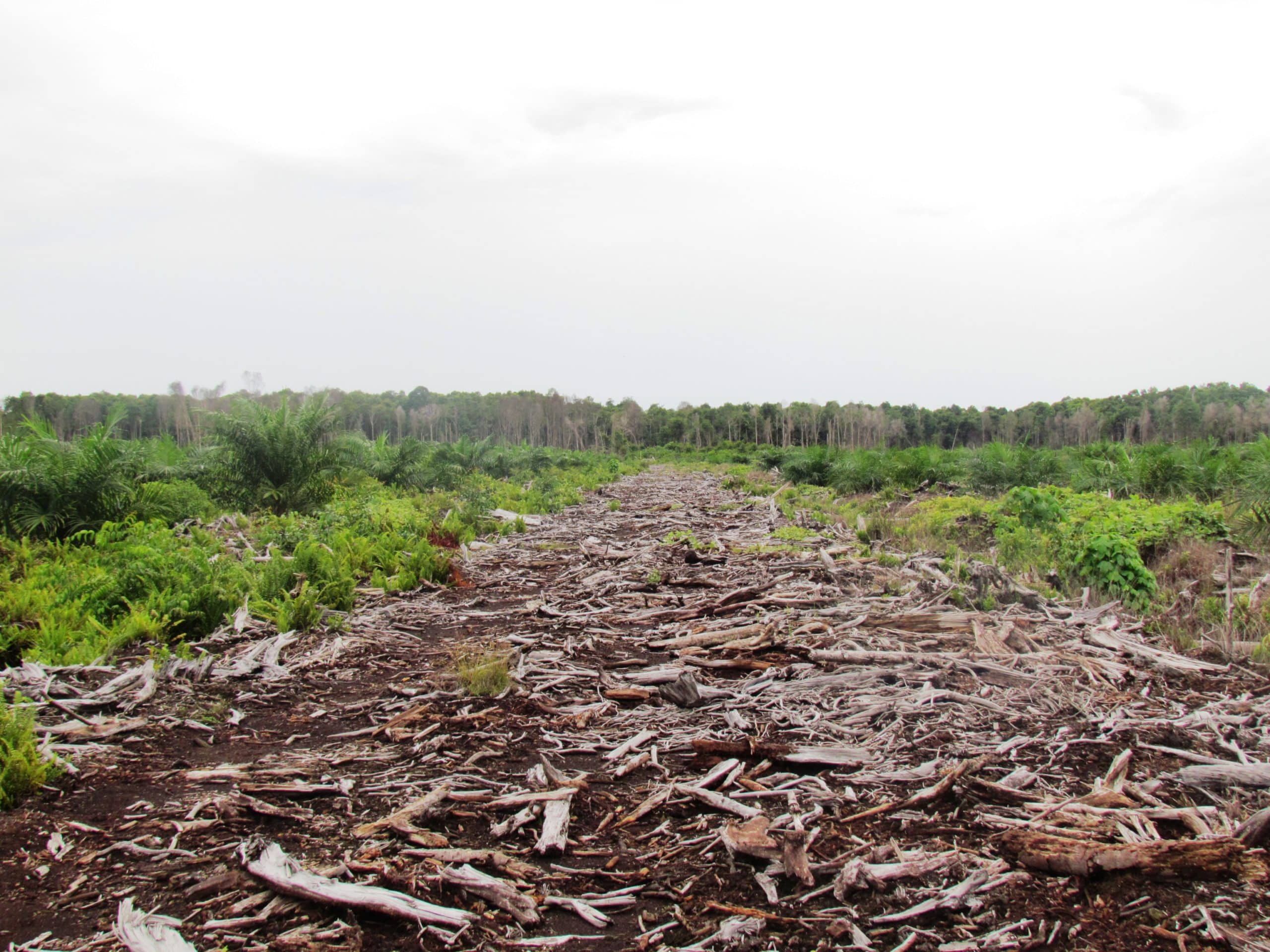
Evidence of forest deforestation for monoculture in Sumatra. Photo: The Orangutan Project.
The genetic diversity of all populations is at risk, especially as they are restricted to fragmented forests and less able to move to other areas. The pressure on orangutans comes from all sides and without urgent intervention to save and extend their remaining forests, they will become extinct.
With no zoo populations of Tapanuli orangutans and with the Sumatran and Bornean zoo populations being too small to be viable, this will mean extinction in the wild and the end of all species of orangutan.
Why Orangutans are Critically Endangered
The facts are startling. Over 80% of orangutans live in unprotected forests. Illegal plantations and encroachment are eating away at the orangutan’s rainforest habitat, even in protected areas such as the Gunung Leuser National Park. Without vast intact forests, orangutans simply cannot survive.
Orangutans not only require many pounds of food in fruit, termites, and leaves every day but also require large home ranges. Thus, orangutans are a semi-solitary species, which means they generally keep away from each other; adult males in particular need space between each other as the sole dominant male in a territory. Incredibly, orangutans build a new nest every night, sometimes travelling dozens of kilometres each day to forage for food, find a new tree for nesting, and build a new nest out of branches and leaves weaved together into a platform.
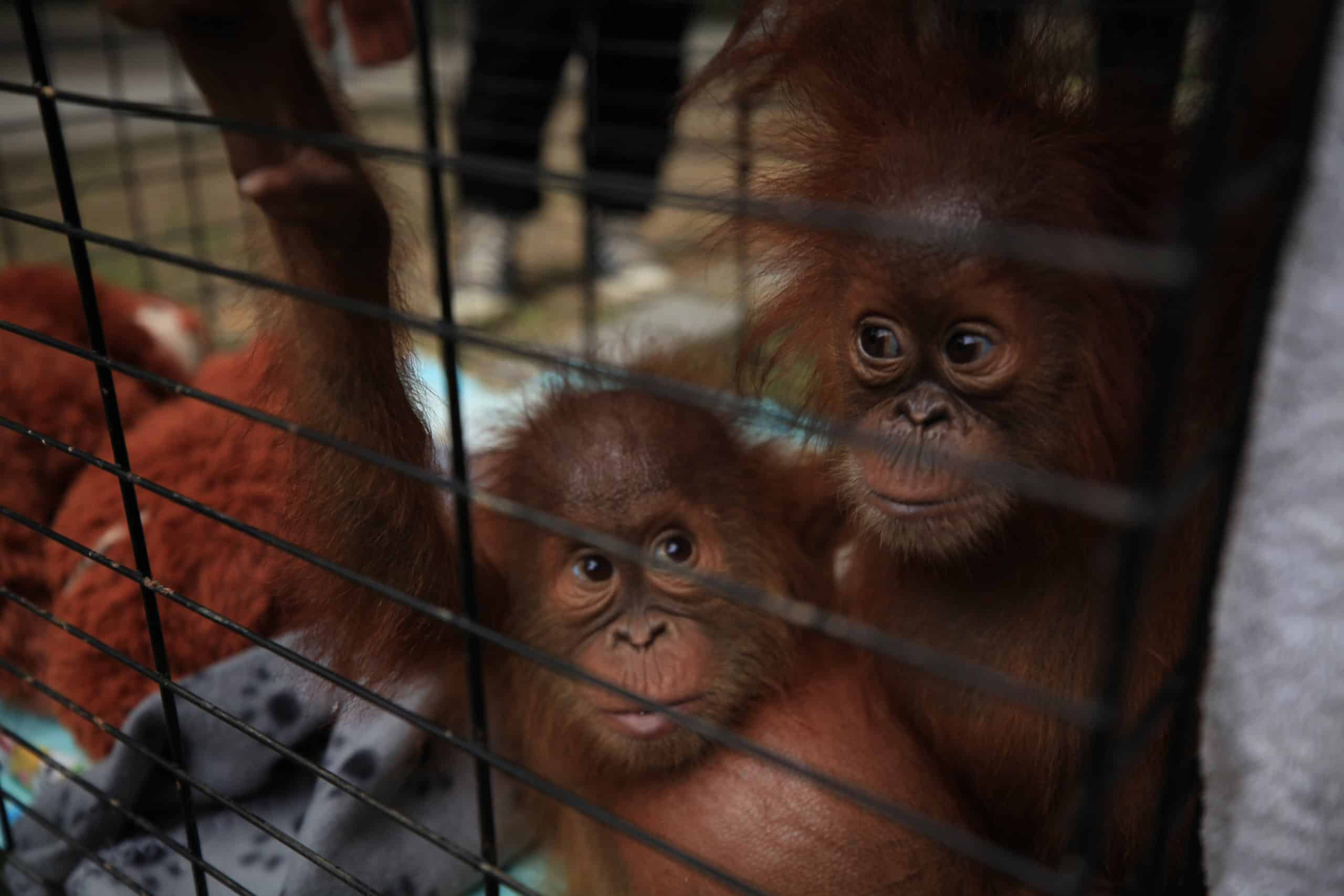
Siti and Sudin were confiscated by Indonesian authorities, just as they were about to be loaded onto a ferry for export outside of Sumatra. Photo: The Orangutan Project.
When food is scarce, fires destroy thousands of acres of forest, or when their home range is destroyed, orangutans emerge starving from the forest, looking for food and trees for nests. Often, the first thing they come across is an oil palm plantation or a village farm. While deforestation is the overriding cause that must be addressed immediately, conflict with humans is also a major threat to orangutans.
Human-orangutan conflict is so common it has its own acronym: HOC. When farmers lose crops to hungry orangutans, they sometimes fight back with bullets or machetes. Although orangutans are seven times stronger than most adult males, there are no reported incidents of an orangutan killing a human. There are countless examples of the opposite.
Another key threat orangutans face is the loss every year of dozens of mothers and their babies. When the forest is destroyed by bulldozers, previously hidden parts of the forest are opened up, and previously hidden orangutan populations become visible. Unscrupulous illegal wildlife traders move in, killing mothers and stealing their babies for the horrific, lucrative illegal pet trade. The Orangutan Project and its partners in Sumatra and Borneo help support the rescue of many orangutans from a life of captivity and trauma every year. But estimates are that only one in six babies is rescued from this insidious trade in infant orangutans.
You might also like: 10 Fascinating Facts about Orangutans
What Are the Solutions?
A key focus for The Orangutan Project is to legally protect and safeguard the remaining rainforests of Sumatra and Borneo, with an ambitious goal to protect eight key ecosystems that orangutans will need in the future if they are to survive extinction.
“We need to legally safeguard eight ecosystems of the right type, shape, and size to sustain large populations now and into the future,” says Cocks. “Orangutans and other large mammals can only thrive in lowland riverine forests, so saving these forests is one of our key strategies to reduce the threat of extinction. It’s not enough, for orangutan survival, to save just any tract of forest.”
Herein lies one of the major challenges these highly sentient beings face. The forests that orangutans need for survival are lowland forests, with rivers running through them. These are also ideal characteristics for agricultural land. The pressures from multinational corporations to plant even more unsustainable monoculture for consumption for short-term greed are hard to fight against. The local communities and indigenous populations barely stand a chance to fight for their land.

Mary was rescued in 2019 by The Orangutan Project from a village in Borneo, where she’d been kept in a small wooden box. Photo: The Orangutan Project.
The conversion of rainforest to unsustainable forms of agriculture, such as oil palm and pulp paper, is only financially viable because it passes the ‘true cost of production’ onto orangutans, other wildlife, and local communities. The burden is also passed onto future generations, who might inherit a planet with insufficient forests to absorb the carbon we are pumping into the atmosphere, with barren lands left after the unsustainable monocultures collapse.
“We are told it is ‘wildlife versus people’, or ‘the environment versus the economy’. Both these statements are false,” says Leif Cocks. “The rainforest not only benefits the orangutans, but it also provides life for all wildlife that live within some of the most biodiverse ecosystems in the world. The rainforest ensures life and livelihoods for indigenous communities, who have lived within and beside the rainforest for centuries, and local communities, who rely on the ecosystem for reliable water, climate mitigation and much more.”
The Orangutan Project is at the forefront of addressing the extensive challenges facing orangutans, other wildlife, rainforests, and local communities. They have a four-pronged conservation and action strategy that includes:
- Legally protecting forests.
- Patrolling, monitoring, and restoring ecosystems.
- Rescuing, rehabilitating, and translocating orangutans.
- Empowering and educating local communities and indigenous peoples.
Orangutans deserve to be saved from extinction. They are the most intelligent being on the planet, apart from humans. Protecting orangutans, their forests, and their rivers is not only vital for the species, but also for all life on Earth. Today, there are still forests remaining in Sumatra and Borneo, but they are under constant threat, being destroyed at an unimaginable rate.
Every single person can make a difference. While we hear about palm oil as a key threat to orangutans, the truth is that stopping palm oil is not a preventative measure. Even if palm oil is removed overnight from our diets and our shampoo, forests will still be destroyed at an unsustainable rate. The forest will still be destroyed for the value of the trees and replaced with another unsustainable monoculture. The only solution is to ensure legal protection of these species while simultaneously safeguard our forests.
A monthly donation to The Orangutan Project’s Save Forest campaign is one of the most effective long-term ways of saving orangutans from extinction – and helping to combat runaway climate change at the same time. For others, adopting an orangutan is a heart-warming way to be part of the journey of an individual orangutan, from a tiny vulnerable infant to a sub-adult ready to return to the wild.
Today on International Orangutan Day, a donation or adoption is one of the best ways we can all be part of the solution.
You might also like: The Project Working to Provide a Lifeline for Trafficked Orangutans








